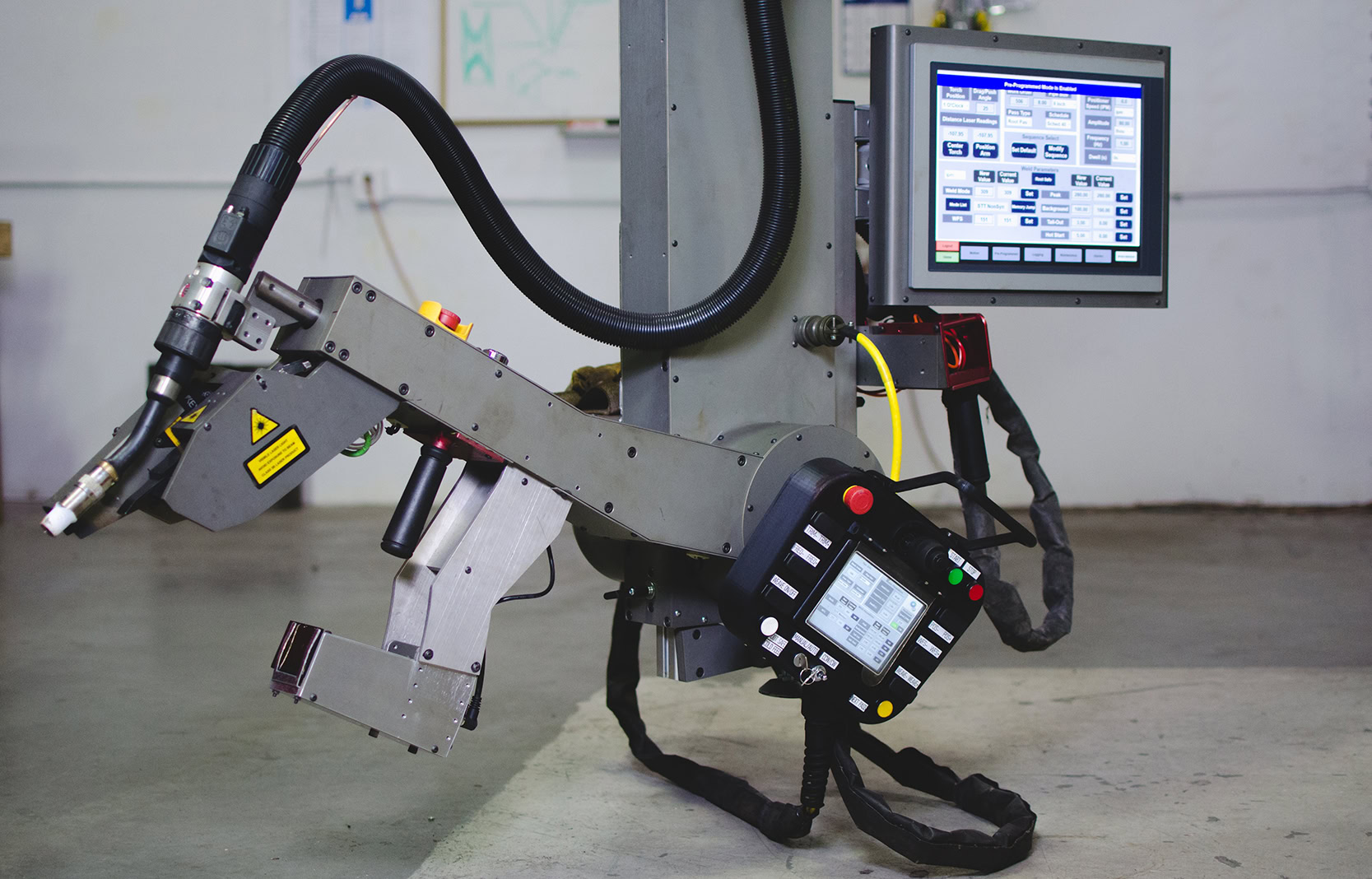Novarc’s Spool Welding Robot (SWR) is the world’s first collaborative welding robot designed to semi-automate the pipe roll welding process. Currently, this process is done manually by highly-skilled welders, of which there is currently a global shortage. As a collaborative robot, Novarc’s SWR works along with the human operator to allow less-skilled welders to do the work of highly-skilled welders, by combining the cognition of a lower-skilled welder with the repeatable motion of our robot. As a result, Novarc’s SWR can produce high quality welds consistently, and significantly increases welder productivity. Below are the benefits of Novarc’s SWR to Welders, and the Environment:
1. Reduction in Welder Fatigue
Welding requires repetitive and accurate movement of the torch, and as such, welder’s fatigue is a chronic industry issue. This fatigue combined with repetitive motion eventually develops into musculoskeletal disorders. However, with Novarc’s SWR, welder’s fatigue is dramatically reduced given the torch is manipulated by the SWR, and welders are only required to monitor and steer the welding torch using the SWR pendant if required.
2. Reduction in Welder Exposure to other Health Hazards
Welders are faced with other health hazards due to the nature of the welding process, such as exposure to flashing by arc, UV light, carcinogenic fumes and excessive heat. With Novarc’s SWR, welders can avoid the arc, the source of UF, heat and fumes. In addition, Novarc’s SWR uses advanced welding waveforms, such as “low fume pulse”, which reduces the amount of magnesium released and brings their exposure to the limits defined by workers’ health and safety standards.
3. Reduction in Release of Ambient Fumes
The shop environment can risk welders and other employees to carcinogenic fumes. With Novarc’s SWR, low fume pulse modes can control and reduce the carcinogenic fumes and magnesium released, reducing the exposure to fumes, and protecting the health and safety of workers.
4. Reduction in Defect Rates and Waste
The best-in-class defect rates in welding shops is currently 3 to 4 per cent, while many shops have higher defect rates. With Novarc’s SWR, the quality of the welds reduces the defect rate to less than 3 per cent, by reducing the risk of human error and providing more consistent welds. As each defect joint requires a significant amount of rework including cutting the weld, rebevelling, refitting and rewelding: all of which results in greater waste. More importantly, the electric power, welding wire and welding shielding gas used for the defect part is wasted. It has been estimated that welding represents 4.5 per cent of the European Union’s gross energy consumption, and arc welding (the primary pipe welding process) produces 9.82 grams pf CO2 per second. By reducing the amount of defects, SWR’s spool welding robot reduces the amount of wasted metal, gas, and most importantly, energy consumption and equivalent C02 emissions.
Contact us to learn more about Novarc’s SWR.
